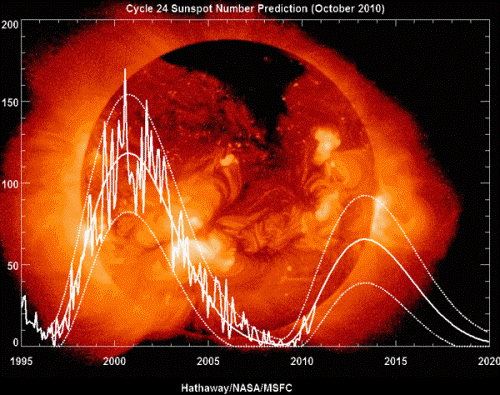That’s the claim, anyway, and most certainly, the images are astoundingly clear and detailed, if a bit oddly hued.
The image, released by the Russian Federal Space Agency (Roscosmos) last week, was taken by the Elecktro-L weather satellite. The satellite is in geostationary orbit about 22,000 miles (36,000km) above the Indian Ocean and was launched in January of 2011.
The super-resolved image is actually made from a composite of four, over-layered, 121-megapixel photographs — three of which were taken at three different wave-lengths in the visible light spectrum, with the fourth (and last added) image being an infra-red (IR) image. This last image is what makes the terrestrial vegetation (forests, etc.) appear orange, and the more or less bare earth (deserts, etc.) appear in greenish hues.
The satellite makes a whole-disc (composite) image of the Earth every 30 minutes and the images are then transmitted to NTs OMZ, the Russian Earth Observation center. According to the Planet Earth website, “Each image produced by this spacecraft is higher resolution than any other whole-disk image produced to date.”

Readers may recall NASA releasing its highest-resolution-ever photo of the Earth (dubbed “Blue Marble”) last year. The NASA image was created by stitching together many smaller, true-color images collected over many months of land, ocean, sea ice, and cloud observations. Many of these images came from the Moderate Resolution Imaging Spectroradiometer, or MODIS, which is on board the Terra satellite, orbiting 700 km (about 420 miles) above the Earth.
Unlike the Russian image, the NASA image is a “true-color mosaic of every square kilometer (.386 square mile) of our planet.”
The Russian satellite images were first published by James Drake on his Planet Earth website.
Watch this ‘whole-earth’ video animation made from the Electro-L satellite images:
Author Comment: I find it pretty darn cool watching this planetary-imaging one-up-manship… the leading space powers competing in a more “artistic” manner… perhaps this marks a trend in space-imaging technology: who can create the most amazing and beautiful images of our Earth, and beyond.
Top Image: (Electro-L satellite image of Earth, May 3); Russian Federal Space Agency (Roscosmos) via planet–earth.ca



Why aren’t there any stars?